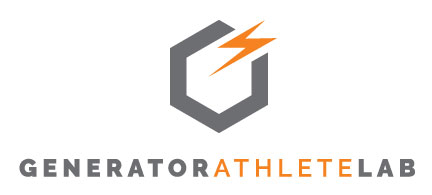Everything You Need to Know About Myofascial Release
Myofascial release is a transformative therapy that addresses tightness and restrictions in the fascia—the connective tissue that surrounds and supports muscles. This hands-on technique can relieve pain, improve flexibility, and promote recovery. At Generator Athlete Lab in Austin, TX, myofascial release is a key part of our recovery services, tailored to meet the diverse needs of our clients.
What Is Myofascial Release?
Myofascial release is a manual therapy that focuses on releasing tension in the fascia. When fascia becomes tight or restricted due to stress, injury, or overuse, it can lead to discomfort, reduced mobility, and chronic pain.
How It Works
Gentle Pressure: Practitioners use steady, hands-on pressure to release tension in specific areas.
Targeted Areas: Focuses on knots, adhesions, or trigger points in the fascia.
Restoring Balance: Helps restore natural movement and reduce strain across the musculoskeletal system.
Benefits of Myofascial Release
Myofascial release offers a range of physical and mental health benefits, making it an essential part of any recovery or wellness plan.
1. Relieves Pain
This therapy targets areas of tightness or restriction in the fascia to alleviate pain caused by conditions such as:
Chronic back pain
Plantar fasciitis
Fibromyalgia
2. Enhances Flexibility and Range of Motion
By loosening tight fascia, myofascial release improves mobility, allowing for better performance in daily activities and physical fitness.
3. Reduces Stress and Promotes Relaxation
The hands-on nature of myofascial release encourages deep relaxation and stress relief, benefiting overall mental health.
4. Boosts Circulation and Recovery
Improved blood flow helps oxygenate muscles and tissues, speeding up recovery after workouts, injuries, or surgeries.
5. Prevents Future Pain and Injuries
Keeping fascia healthy and flexible reduces the risk of future strains, injuries, and chronic discomfort.
Myofascial Release Techniques
Generator Athlete Lab uses a variety of techniques to ensure effective and personalized myofascial release treatments.
1. Direct Myofascial Release
This method applies steady pressure directly to the fascia to stretch and release restrictions, targeting specific pain points.
2. Indirect Myofascial Release
A gentler technique, indirect release focuses on allowing the fascia to relax naturally through light stretching and minimal pressure.
3. Self-Myofascial Release
Using tools like foam rollers or massage balls, clients can perform basic myofascial release techniques at home to complement professional treatments.
Myofascial Release vs. Massage Therapy
While both myofascial release and massage therapy involve hands-on techniques, they target different aspects of the body:
Myofascial Release: Focuses on the fascia, aiming to release tension and restore balance across the body.
Massage Therapy: Primarily targets muscles to relieve soreness, increase relaxation, and improve circulation.
At Generator Athlete Lab, we often combine these therapies for a comprehensive approach to recovery and wellness.
Myofascial Release at Generator Athlete Lab
At Generator Athlete Lab, we integrate myofascial release into our suite of recovery services to address the unique needs of every client.
What to Expect During a Session
Personalized Assessment: We evaluate your mobility, pain points, and specific goals.
Tailored Treatment: Our therapists use techniques suited to your needs, focusing on areas of tension or restriction.
Complementary Services: Enhance your session with add-ons like cryotherapy or an infrared sauna for optimal results.
Who Can Benefit?
Individuals dealing with chronic pain or tension.
Clients recovering from injuries or surgeries.
Those looking to improve flexibility and prevent future discomfort.
Frequently Asked Questions
Q: Does myofascial release hurt?
A: Most clients find it relaxing, though you may feel mild discomfort as tension is released. Our therapists adjust pressure to your comfort level.
Q: How long does a session take?
A: Sessions typically last 30–60 minutes, depending on your specific needs and treatment plan.
Q: Is myofascial release safe for everyone?
A: Yes, but it’s important to consult with a professional if you have a medical condition or recent injury.
Discover Myofascial Release at Generator Athlete Lab
Myofascial release is more than just a therapy—it’s a pathway to better movement, reduced pain, and improved overall health. Whether you’re looking to recover from an injury or enhance your flexibility, Generator Athlete Lab’s skilled therapists are here to help.
Book Your Myofascial Release Session today and experience the benefits of this transformative therapy.


